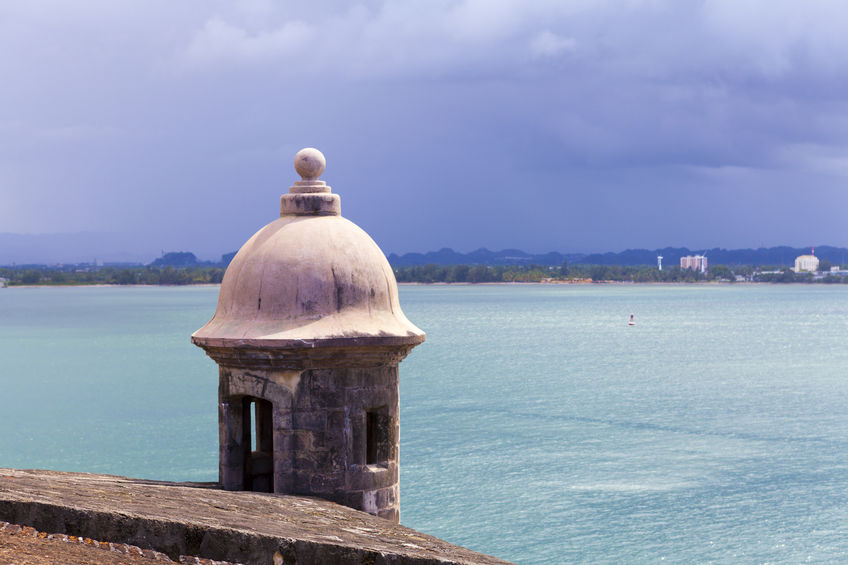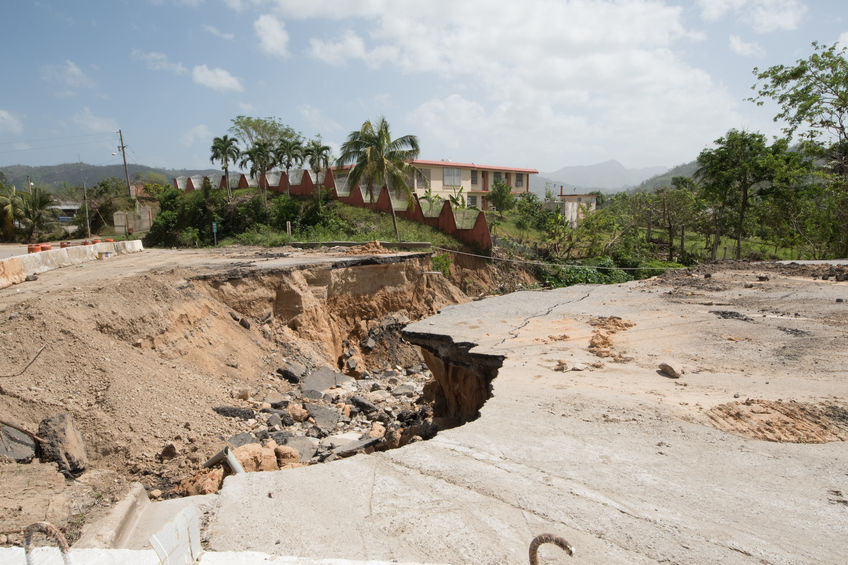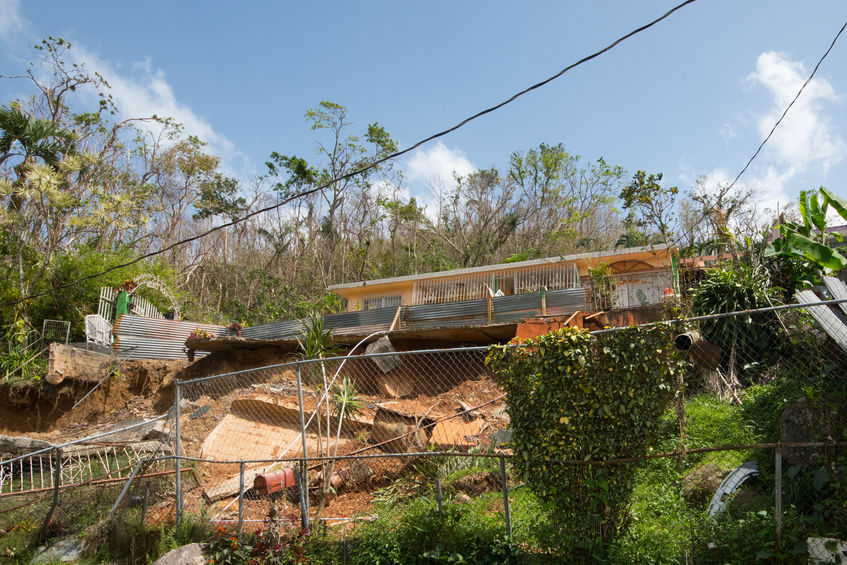
Last year was historic for many reasons, but one of the most tragic was a barrage of hurricanes and other natural disasters unparalleled in recent American history, including the first time two Category Four hurricanes made landfall in the United States in the same year. Disasters struck many of our communities including those in Texas, Florida and California. It may seem like the areas affected by the disasters of 2017 are on their way to recovery, but the truth is that the effects of the damage still linger with recovery totaling billions of dollars and it will be years before these areas are fully redeveloped. All of the areas affected by major disasters need not only goverment support in their ongoing recovery, but also provide bankers an opportunity to step up in their communities in an expanded way.
In the case of Puerto Rico and the Virgin Islands, the challenge of disaster relief, including that provided by banks, comes with an additional hurdle – geographic isolation. Unlike most major disasters, delivery of both early and ongoing relief efforts to these locales is complicated by simple geographic factors, including separation from the mainland. The devastation inflicted by three hurricanes in a few short weeks on our nation’s Caribbean territories was brutal. Shortly after Hurricane Maria’s landfall, it was estimated that the potential cost of addressing the damages could exceed $95 billion.1 Since then, billions of dollars have poured into the islands from HUD, the SBA, FEMA and other government organizations. Much of the basic infrastructure has slowly come online and life is gradually getting back to normal for the residents that remain. But for many residents and displaced citizens, the needs are still great. What can banks do to meet those needs?
Since 2005, banks have received positive consideration under the Community Reinvestment Act for revitalization and stabilization efforts in major disaster areas. In the most recent update to the Interagency CRA Questions and Answers from July 2016, the banking regulatory agencies provided guidance for bank efforts in designated disaster areas. It is important to note that an area must first be designated by the Federal government as a “major disaster area” to be CRA-eligible. A list of current major disaster area declarations is maintained on FEMA’s website.

The uniqueness of the situation in Puerto Rico and the Virgin Islands led federal bank regulatory agencies to issue specific guidance to banks on January 25, 2018. While CRA guidance generally supports bank community development efforts in larger state or regional areas where the bank also has assessments areas, this new guidance responds to questions bankers raised for clarification regarding geographic areas that do not include their assessment areas. The agencies set forth that banks can receive favorable CRA consideration for community development activities to revitalize or stabilize Puerto Rico and the Virgin Islands, regardless of where a bank is physically located. In other words, any bank in the nation that supports disaster recovery efforts in the islands or for those displaced due to the hurricane can receive favorable consideration during their next CRA examination, provided their bank has sufficiently met the need in their own assessment areas. As the agencies point out, given the geographic factors at play in this instance and the economic impacts that could be felt on the mainland, a broader approach under CRA was more appropriate.
In a separate Q&A, the regulators further clarify that revitalization and stabilization efforts for designated disaster areas can consist of activities such as attracting new or retaining existing businesses or residents. This activity can include efforts such as affordable housing, economic development, small business support, qualified donations, bank financing, infrastructure and other financial assistance or services.

An additional important side note, CRA-qualified support by banks for any disaster area is not limited to only low- and moderate-income geographies. In Puerto Rico and the Virgin Islands, like all FEMA major disaster declarations, bank support of revitalization and stabilization initiatives for all income levels can receive favorable positive CRA consideration. It is important that banks track all activities to support major disaster areas to ensure they are telling the full story of their efforts in those communities.
Many banks have already responded to the needs of Puerto Rico, with millions donated in relief funds. Quontic Bank in Miami donated two and a half tons of bottled water to those in need. 2 Banco Popular, which operates 170 branches in Puerto Rico, responded quickly to bring both its branches and ATM networks back online.3 EVERFI, the official digital financial education provider for the island of Puerto Rico, partnered with the Department of Education, to train over 200 teachers, in English and Spanish, on financial education courses that they can use in the classroom to teach students important skills such as obtaining credit, saving techniques, retirement planning and more. 4

Yet, while things seem to be progressing, a larger problem is developing, one that was underway long before the hurricanes, but only intensified in their aftermath. Not only was Puerto Rico experiencing a financial crisis pre-hurricane, but after Hurricane Maria, a housing meltdown looms. Nearly one-third of the island’s 425,000 homeowners are behind on their mortgage payments and the island faces a 35% foreclosure and delinquency rate. 5 While foreclosure efforts were temporarily delayed under federal guidance, most of those delays have now or will soon expire. Many residents of Puerto Rico are still seeking employment and many thousands more have left the island entirely, leaving behind tens of thousands of abandoned properties. Some analysts believe that nearly 20 percent of the residents could leave within the next four years, creating a housing crisis in Puerto Rico much like the 2008 rescission6 and increasing the need for affordable housing and employment opportunities in many cities that are already experiencing challenges.
Until recently, the Neighborhood Stabilization Program was an important initiative under which banks recieved positive CRA consideration for efforts supporting the program’s goals in response to the 2008 recession. Effective January 2018, inclusion of the Neighborhood Stabilization Program in the CRA was removed, due to the program sunsetting based on established funding timelines. Maybe it is time for legislators to explore a limited revival of the Neighborhood Stabilization Program, focused on housing recovery and preservation in disaster areas, especially Puerto Rico. It seems only logical. In the mean time, this need creates new and expanding opportunities for banks to address redevelopment by working with local developers and nonprofits in disaster areas. Banks can tailor their products, services and community development activities to not only address ongoing recovery, but also to provide mortgage and small business loans to ensure the success of citizens for the long-term.
In September, we will reach the one-year anniversary of Hurricane Maria’s landfall in Puerto Rico and the Virgin Islands. In the months since the initial disaster, while significant progress has been made, there is much effort still needed. As bankers, your CRA efforts can have a powerful impact on ensuring that these island paradises, and other similar disaster areas, are revitalized and stabilized for decades to come.
ABOUT THE AUTHOR Brian Waters, CRCM, is the President, COO and Co-Founder of findCRA, which offers both online services for banks to identify and document CRA-qualified nonprofit relationships and build instant performance context, as well as traditional CRA consulting and training services. He has over 20 years of experience in banking compliance and community development and is a resident of Louisville, KY. Contact him at brian@findCRA.com.
1. https://money.cnn.com/2017/09/28/news/economy/puerto-rico-hurricane-maria-damage-estimate/index.html
3. https://www.americanbanker.com/news/populars-puerto-rico-goal-get-banking-system-up-and-running
5. https://www.nytimes.com/2017/12/16/business/puerto-rico-housing-foreclosures.html
This article originally appeared in the July / August 2018 issue of the ABA Bank Compliance Magazine published by the American Bankers Association.